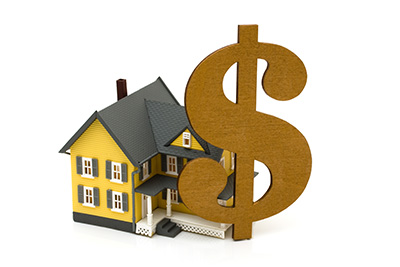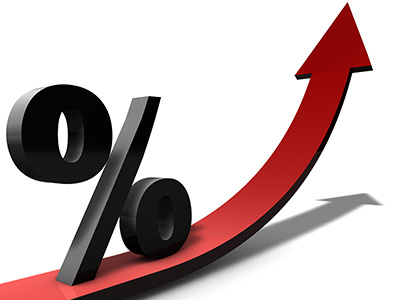Finding Your Path
The Tipping Point in Home Prices?
By Lorne Polger, Senior Managing Director

In his debut novel published in 2000, “The Tipping Point: How Little Things Can Make a Big Difference,” Malcolm Gladwell defined the tipping point as “the moment of critical mass, the threshold, the boiling point.” In real estate investing, the term is often used to describe the time when the markets change directions or inflect.
I believe we are now at, or at least quickly approaching, the tipping point in residential home prices in much of the U.S. In the short term, I think we will see a plateau in pricing, and in the mid-term, at a minimum, a modest decline.
Come on now Lorne, don’t trees keep growing to the sky? Doesn’t the music play forever? Sorry kids, not always, but especially so, not now. Below, a few reasons why.
Inflationary Pricing Trends
The last few years have seen meteoric growth in residential home pricing in many markets. Examples abound. Denver average home prices are up 13% in the past year. San Diego a whopping 20%. Phoenix, a nose-bleeding 30%. Housing costs (home prices and rents) aren’t the only reason the Federal Reserve will increase interest rates this year, but it is certainly a major factor.
 If you’re a homeowner, you’ve been thrilled with these value increases. What’s not to love? Your balance sheet has increased as your leverage has gone down. Yippee! But what if you want to sell? Well, you still get a limited tax break for your first $500,000 of gain if you’re married ($250,000 if you’re single), but after that, you’re paying federal capital gains rates on the sale and ordinary income rates (in California and many other high-tax states) on top of that. And then don’t forget that pesky 2.9% Medicare tax. So roughly a third is going to Uncle Sam.
If you’re a homeowner, you’ve been thrilled with these value increases. What’s not to love? Your balance sheet has increased as your leverage has gone down. Yippee! But what if you want to sell? Well, you still get a limited tax break for your first $500,000 of gain if you’re married ($250,000 if you’re single), but after that, you’re paying federal capital gains rates on the sale and ordinary income rates (in California and many other high-tax states) on top of that. And then don’t forget that pesky 2.9% Medicare tax. So roughly a third is going to Uncle Sam.
So, you do the math and still feel pretty good about things…. until you start looking for that replacement home. They want $2,000,000 for that piece of junk? You’ve got to be kidding. Maybe I’ll just stay put for now. Supply in San Diego was down 50% year over year, the number of homes sold down 48%! A little tight. For now.
The Affordability Gap
As a result of the massive increases in values, housing has become dramatically less affordable. Only 23% of San Diegans can afford the median priced home, which has risen to a sky-high $845,000 as February according to the California Association of Realtors. Home affordability in many other markets, including Seattle and Denver, are also quite low. As affordability falls, historically, demand has fallen with it.
Rising Interest Rates
Interest rates are predicted to rise this year. Goldman Sachs and Bank of America are predicting seven rate increases in 2022, meaning a minimum 1.75% increase in the prime rate of lending (from 3.25% to 5.00%). The current betting odds call for four-five rate increases this year. In any case, rates will rise, the only question is by how much. An increase in rates will correspondingly increase the cost of borrowing and reduce home affordability.
 Here's an example. In 2020, Sally and John purchased their new home. Congratulations! They stretched for the $1,000,000 purchase price, but they were so happy. They saved up $200,000 toward the down payment and were able to get an $800,000 mortgage at the great rate of 2.75%, fixed for 30 years. A truly phenomenal rate. Their mortgage payment was $3,265/month. When you factor in property taxes, insurance and utility costs, their all-in monthly nut was around $5,000/month, no small sum, but given the high cost of renting a similar home, they felt good about it.
Here's an example. In 2020, Sally and John purchased their new home. Congratulations! They stretched for the $1,000,000 purchase price, but they were so happy. They saved up $200,000 toward the down payment and were able to get an $800,000 mortgage at the great rate of 2.75%, fixed for 30 years. A truly phenomenal rate. Their mortgage payment was $3,265/month. When you factor in property taxes, insurance and utility costs, their all-in monthly nut was around $5,000/month, no small sum, but given the high cost of renting a similar home, they felt good about it.
That was then. This is now. Last week, the average 30-year mortgage had risen to just under 4%. Still cheap when viewed through the historic prism of interest rates but climbing quite a bit from the low point just two years ago. Where would Sally and John’s payment be today? $3,819/month, a $550 (17%) increase from their prior mortgage. Not horrible, but not insignificant either, especially for a young couple already stretching to meet their other needs in a rising price environment. (Did I mention $5/gallon gas, $300 grocery bills, $75,000/year college tuition payments for the kids, doubling of insurance premiums, etc.?)
But what happens next year after all these upcoming rate hikes targeted at slowing the rampant (not “transitory”) inflation that we’ve been experiencing? Well, at a mortgage rate of 5.5%, their payment increases to $4,542/month, almost $1,300 (40%) higher than what Sally and John were paying based on their 2020 mortgage. Do you see where this is going? At some point, Sally and John waive the white flag and say, “we’ll just continue to rent for the foreseeable future, it’s just too darn expensive to buy right now.” Tough for young couples trying to get ahead and not great for realtors and others serving the single-family home industry. Not bad for apartment demand, rent growth and apartment owners like Pathfinder and its investors.
Wilting Demand
As the cost of borrowing increases, affordability, already enormously stretched, could reach a breaking point. And when it does, demand will likely drop. If demand drops, prices could plateau, and even fall. And it’s not just about interest rates. It’s also about owners not wanting to move because of what they must pay for their next home, plus capital gains taxes. Not to mention that we’ve become less of a homeownership society. Homeownership peaked around 69% back in 2005 and it’s been hovering around 64% since the Great Recession. Analysts think demographic trends could knock the rate down another few percentage points by 2025 – and that’s before considering higher interest rates.
It’s back to the fundamental principles of supply and demand that I learned back in 1980 in Professor Mike Bird’s Economics 101. If demand drops and supply is stagnant, prices will drop to compensate. If demand drops and supply grows, watch out, that’s a potential tsunami.
Supply Chain Fixes and Leveling Material Costs
Part of the reason for the spike in home prices has been the burgeoning costs of labor, materials and supplies over the last few years, caused, in part, by the pandemic. Supply chains have been disrupted, production has been curtailed, and labor has been extremely tight. While I don’t believe these will change overnight, we are reading reports of prices for lumber and other materials leveling off and hearing that supply chain disruptions could be on the mend over the next six to 12 months. That should result in a slowdown of construction cost increases, which has been one of the pressure points on new home prices (which ripple through the resale market).
Is it time to put the house up for sale, take the profits and go cruise the National Parks in your Sprinter® van for a couple of years? Not suggesting that. But I think the run up in home prices is largely done. If you haven’t refinanced yet, get that loan application in ASAP. If you’re thinking of selling, it’s probably as good a time as ever.
Lorne Polger is Senior Managing Director of Pathfinder Partners. Prior to co-founding Pathfinder in 2006, Lorne was a partner with a leading San Diego law firm, where he headed the Real Estate, Land Use and Environmental Law group. He can be reached at lpolger@pathfinderfunds.com.
Share this Article
IN THIS ISSUE
PATHFINDER PARTNERS INCOME FUND, L.P.
A Stablized Multifamily Fund
CHARTING THE COURSE
Clean-Up on Aisle Five! Will the Fed Cause a Recession to Curb Inflation?
FINDING YOUR PATH
The Tipping Point in Home Prices?
GUEST FEATURE
The 2021 Apartment Market and What’s Ahead in 2022
ZEITGEIST
Sign of the Times
TRAILBLAZING
Chestnut Ridge, Denver, CO
NOTABLES AND QUOTABLES
Creativity
